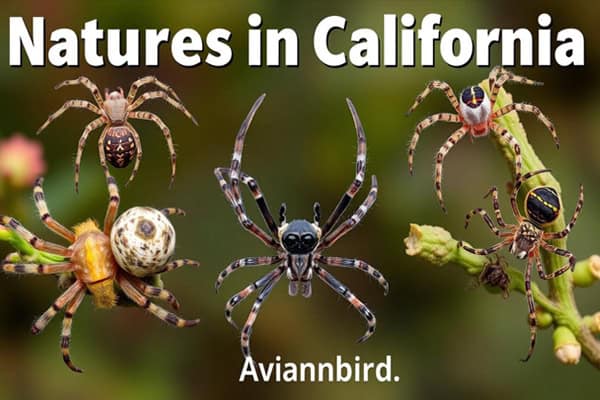7 Red Headed Birds of Hawaii (With Pictures)
Hey there! Welcome to our cool adventure into the world of Red Headed Birds in Hawaii! Today, we’re going to check out 10 awesome red headed bird buddies that live in this amazing place. Get ready to be wowed by how cool they look and the neat stuff they can do! And guess what? We’ve got some super cool pictures so you can see them up close
Here is the main points:
- Hawaii Is home to a wide range of red-headed bird species, including the tanager.
- These birds possess striking appearances and unique adaptations
- Their vibrant plumage adds a splash of color to Hawaii’s avian diversity
- Enjoy stunning pictures of these magnificent birds
- Exploring and appreciating these species contributes to the conservation of Hawaii’s natural heritage
1. Apapane (Himatione sanguinea)
The Apapane, scientifically known as Himatione sanguinea, is a red-headed bird species native to Hawaii. Known for its vibrant plumage and unique characteristics. Besides this, Apapane is a treasured bird species in the Hawaiian islands.
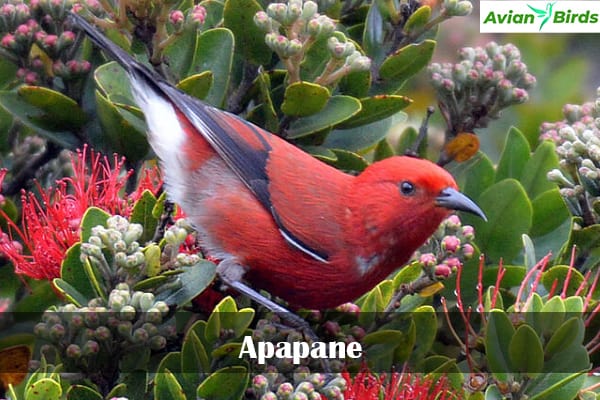
Moreover, This small honeycreeper is found in various forest habitats, especially the native ohia lehua trees, where it feeds on nectar and insects. Plus, Apapane’s crimson head and upper parts make it easily distinguishable among other birds, and its black wings and tail add to its stunning appearance which enhances its beauty.
The Apapane’s bright red plumage is also thought to play a role in attracting mates and defending territories. The males are particularly striking, sporting a fiery red head and throat, while the females have a more subdued coloring.
The Apapane is a vital pollinator in the Hawaiian ecosystem, as it feeds on nectar and transfers pollen from one flower to another. Its important role in promoting plant reproduction makes it an essential part of Hawaii’s biodiversity.
Characteristics of the Apapane:
- Length: Approximately 5.5 inches
- Weight: Around 14 grams
- Distinctive red plumage on the head and upperparts
- Black wings and tail feathers
- Feeds on nectar, insects, and occasionally fruits
- Builds cup-shaped nests using materials such as moss, fibers, and feathers
- Produces a variety of vocalizations, including melodic songs and sharp calls for communication
The Apapane is a common sight in forests throughout Hawaii, and its presence adds to the vibrant avian diversity of the islands. Birdwatchers and nature enthusiasts flock to see this beautiful red headed bird species in its natural habitat.
Conservation Status:
The Apapane currently maintains a stable population and is not listed as threatened or endangered by the International Union for Conservation of Nature (IUCN). However, habitat loss, introduced predators, and the impacts of climate change pose potential threats to its long-term survival.
| Scientific Name | Common Name | Conservation Status |
|---|---|---|
| Himatione sanguinea | Apapane | Least Concern |
2. Red Avadavat (Amandava amandava)
The Red Avadavat, also known as Amandava amandava, is another striking red headed bird species found in Hawaii. With its vibrant red plumage and unique features, it adds a touch of color to the avian diversity of the islands.
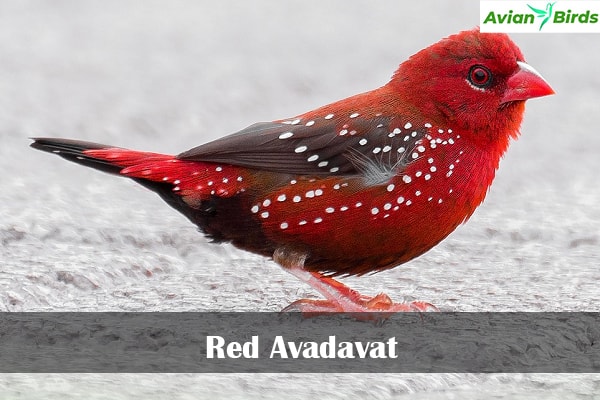
The Red Avadavat is commonly found in open grasslands, fields, and shrublands across Hawaii. Its preferred habitats include agricultural areas, gardens, and forest edges. These birds are also known to visit bird feeders, attracting attention with their bright colors.
In terms of behavior, the Red Avadavat is a social and active bird. It often forms small flocks and engages in various activities such as foraging, feeding, and social interactions. Their diet mainly consists of grass seeds, millets, and insects.
“The Red Avadavat’s stunning red plumage and lively behavior make it a delight to observe in the wild. Its presence adds a vibrant touch to Hawaii’s diverse bird population.” – Birdwatcher John Smith
When it comes to breeding, the Red Avadavat builds a cup-shaped nest in dense shrubs or trees. The female lays a clutch of eggs, which she incubates for about two weeks. Both parents take turns feeding their hatchlings until they fledge and become independent.
The Red Avadavat’s presence in Hawaii enhances the avian diversity of the islands. Its unique characteristics and adaptability make it an important species to study and conserve. Understanding their habitat needs and supporting conservation efforts can help ensure their continued presence in Hawaii’s ecosystem.
3. Northern Cardinal (Cardinalis cardinalis)
The Northern Cardinal (Cardinalis cardinalis), also known as the Brazilian cardinal with its striking red plumage, is a familiar sight in Hawaii, despite not being a native species. The introduction of these birds to the islands has made them a popular subject for bird watchers.

Appearance: The Northern Cardinal is known for its vibrant red feathers, which are particularly prominent on its crest and face. The male has brighter red plumage, while the female has a more muted coloration.
Habitat: Although originally native to North America, the Northern Cardinal has adapted well to a variety of habitats in Hawaii. They can be found in forests, gardens, and urban areas, making them highly versatile birds.
“The bright red plumage of the Northern Cardinal adds a vibrant touch to the Hawaiian avian landscape.” – Bird Watching Hawaii
Bird Watching: The Northern Cardinal’s striking appearance and behavior make it a favorite among bird watchers. Its distinctive song and energetic movements make it easy to spot and observe. Whether you’re a beginner or an experienced bird watcher, catching a glimpse of a Northern Cardinal is always a thrilling experience.
If you’re interested in bird watching in Hawaii, keep an eye out for these beautiful red headed birds. Their presence adds an extra layer of color and diversity to the island’s avian population.
| Species | Northern Cardinal |
|---|---|
| Scientific Name | Cardinalis cardinalis |
| Native to | North America |
| Introduced to | Hawaii |
| Plumage | Bright red with a crest |
| Habitat | Forests, gardens, urban areas |
| Behavior | Distinctive song, energetic movements |
| Popular among | Bird watchers |
4. Red-Crested Cardinal (Paroaria coronata)
The Red-Crested Cardinal is a medium-sized bird with a stunning red head and a prominent crest that adds to its striking appearance. It is one of the many red-headed bird species that can be found in Hawaii, adding to the avian diversity of the islands.
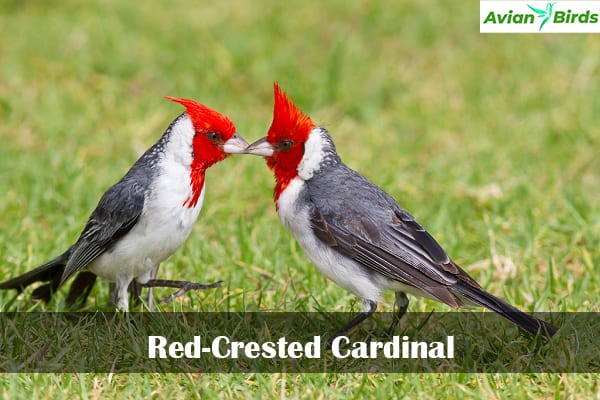
Unlike some of the other red-headed birds in Hawaii, the Red-Crested Cardinal is not native to the islands. It was actually introduced to Hawaii, most likely in the mid-20th century. The exact origins of its introduction remain uncertain, but it is believed to have been brought to the islands for decorative purposes.
Despite being an introduced species, the Red-Crested Cardinal has adapted well to the Hawaiian environment. It can be commonly found in open habitats such as parks, gardens, and agricultural areas. Its ability to thrive in these diverse landscapes has contributed to its successful establishment in Hawaii.
When it comes to appearance, the Red-Crested Cardinal is a sight to behold. In addition to its vibrant red head and crest, it has a black mask around its eyes and a gray body with white markings. The combination of these colors makes it a truly eye-catching bird.
The ecological impact of the Red-Crested Cardinal in Hawaii is not well-studied. However, being an introduced species, it could potentially compete with native birds for resources such as food and nesting sites. Further research is needed to understand its interactions with other bird species and its overall impact on the local ecosystem.
In conclusion, the Red-Crested Cardinal is a fascinating addition to Hawaii’s red-headed bird population. Its introduction to the islands has allowed bird enthusiasts and nature lovers to witness the beauty of this species up close. While its ecological impact remains unclear, its vibrant plumage and adaptability make it a remarkable sight in Hawaii’s diverse avian community.
5. Yellow-Billed Cardinal (Paroaria capitata)
The Yellow-Billed Cardinal, scientifically known as Paroaria capitata, is a stunning red-headed bird species that was introduced to Hawaii. This vibrant bird adds a pop of color to the avian diversity of the islands.

Yellow-Billed Cardinal has a distinct red head that contrasts beautifully with its yellow bill, which gives it its name. The breeding Habits of this species, known as the Brazilian cardinal, are quite fascinating. During the breeding season, the male Yellow-Billed Cardinals showcase their bright red plumage and perform elaborate courtship displays to attract females.
The males sing melodious songs while hopping around energetically, showing off their colors and impressive tail feathers. These displays not only serve to attract a mate but also establish territories and ward off rival males.
Yellow-billed cardinals prefer habitats with dense vegetation, such as shrubs and trees, where they can find shelter and build their nests. They are often seen in gardens, forests, and urban parks, making them a familiar sight to bird enthusiasts.
These beautiful birds feed on a variety of seeds, fruits, and insects, displaying versatility in their diet. Their ability to adapt to different food sources contributes to their success in Hawaii’s ecosystems.
Yellow-billed cardinals are not native to Hawaii But were introduced to the islands in the early 20th century, which includes species that have also been introduced to Hawaii. Since their introduction, they have become well-established and can now be found across the archipelago.
Yellow-Billed Cardinal (Paroaria capitata) Characteristics
| Species | Yellow-Billed Cardinal |
|---|---|
| Scientific Name | Paroaria capitata |
| Head Color | Red |
| Bill Color | Yellow |
| Breeding Season | Spring and Summer |
| Habitat | Gardens, forests, urban parks |
The introduction of the Yellow-Billed Cardinal to Hawaii adds to the diverse array of red-headed bird species found on the islands. Its unique breeding habits, vibrant plumage, and adaptability make it a captivating subject for bird enthusiasts and researchers alike.
6. House Finch (Haemorhous mexicanus)
The House Finch (Haemorhous mexicanus) is a vibrant red-headed bird that is native to South America. However, it has also been introduced to the Hawaiian islands, where it has adapted successfully to the local environment. These birds are a common sight in Hawaii and can be easily identified by their reddish plumage on the head and chest.

The House Finch is a small to medium-sized bird with a rounded body and a slightly curved beak. The males have more vibrant red coloration on their heads and chests, while the females have a more subdued plumage of brown and gray. Their wings are brown with streaks, and their tails are slightly notched.
House Finches are social birds and are often seen in small flocks, foraging for seeds and fruits. They have a varied diet that includes a wide range of plant materials, including buds, berries, and nectar. These adaptable birds can also consume insects and spiders when necessary.
House Finches are known for their melodious and cheerful songs. The males often sing to establish their territory and attract mates. Their songs consist of short, jumbled notes that create a pleasant and lively chorus in the early morning hours.
During the breeding season, male House Finches display elaborate courtship behaviors to impress females. They puff up their feathers, sing energetically, and perform aerial displays to capture their attention. The females build nests in bushes or trees, using twigs, grass, and other materials. They lay a clutch of 3-6 eggs, which they incubate for about two weeks.
House Finches are highly adaptable birds that have successfully colonized many different habitats. In Hawaii, they can be found in urban areas, agricultural lands, and even native forests. They have thrived in these various environments and have become a familiar and beloved sight for both locals and visitors alike.
7. I’iwi (Drepanis coccinea)
The I’iwi, scientifically known as Drepanis coccinea, is a native bird species to Hawaii known for its vibrant red plumage. Also referred to as the Scarlet Honeycreeper, this iconic bird is endemic to the archipelago and holds great ecological significance.
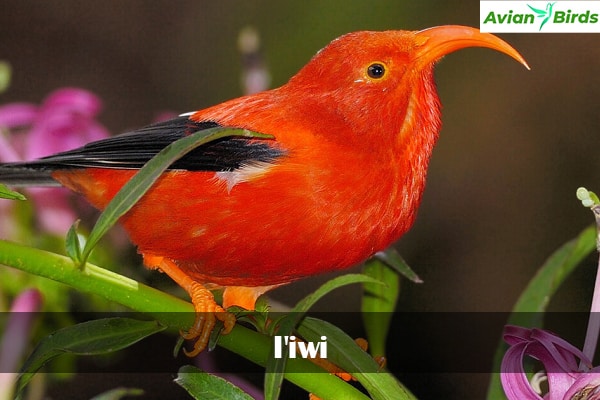
The I’iwi’s striking red head, coupled with its unique curved bill, makes it a captivating sight for birdwatchers and nature enthusiasts. Its vibrant colors are a result of the specialized diet of nectar and pollen it consumes from the native Hawaiian flowers, such as the ‘ohi’a lehua.
Conservation Efforts
Due to habitat loss, disease, and the threat of invasive species, the I’iwi population has experienced a significant decline in recent years. Conservation organizations and local communities are actively working towards protecting and preserving the species.
“The I’iwi is not just a beautiful bird; it is also a symbol of Hawaiian culture and an important indicator of the health of our native ecosystems. Our efforts to conserve this iconic species are crucial for the overall well-being of Hawaii’s biodiversity,” says Dr. Keala Campbell, a wildlife biologist.
Conservation initiatives include habitat restoration, predator control, and public awareness campaigns. The I’iwi is also listed as a protected species under the U.S. Endangered Species Act.
Ecological Significance
The I’iwi plays a vital role in pollination, as it feeds on nectar and transfers pollen from flower to flower. This process helps in the reproduction of many native plant species, contributing to the preservation of Hawaii’s unique flora.
Furthermore, the I’iwi’s presence serves as an indicator of the overall health of Hawaii’s native forests. Its decline signals potential environmental imbalances that may affect other species and ecosystem processes.
By studying and conserving the I’iwi, scientists gain valuable insights into the ecological dynamics of Hawaii and the importance of preserving its native species.
Check Our Previous Articles:
| Doves In Arizona |
| Beautiful Peacocks In The World |
| BLUE BIRDS In Michigan |
| Are Purple Peacock Real? Unlocking the Mystery |
Final Thoughts:
The Red Headed Birds of Hawaii make the island’s birdlife pop with bright colors. They’re really special and cool! People who love birds and want to protect them think they’re awesome. Plus, knowing about these birds is super important for taking care of Hawaii’s environment. It’s up to us bird fans to keep them safe and make sure their homes stay protected too.
Frequently Asked Questions
Q1. What are the 10 red-headed birds of Hawaii?
The 10 red-headed birds of Hawaii are the Apapane, Red Avadavat, Northern Cardinal, Red-Crested Cardinal, Yellow-Billed Cardinal, House Finch, I’iwi, Red Junglefowl, Red-Masked Parakeet, Redhead, and birds such as the tanager and duck species that have been introduced to Hawaii and Puerto Rico.
Q2. Are these red-headed birds native to Hawaii?
Some of these birds, like the Apapane and I’iwi, are native to Hawaii, while others like the Northern Cardinal and House Finch have been introduced to the islands.
Q3. What are the characteristics of these red-headed birds?
These red-headed birds vary in size, habitat preference, and behavior. However, they all share a striking red head and plumage that makes them easily distinguishable.
Q4. Can I see these birds in Hawaii?
Yes, many of these birds can be found in Hawaii’s natural habitats, such as forests, parks, and gardens, with many being popular among birding enthusiasts on the Hawaiʻi Birding Trails. Bird-watching enthusiasts often visit these areas to catch a glimpse of these beautiful creatures.
Q5. Are these red-headed birds endangered?
Some of these birds, like the Apapane and I’iwi, are listed as endangered or critically endangered due to habitat loss and other factors. Conservation efforts are underway to protect and preserve these species.
Q6. How can I contribute to the conservation of these red-headed birds?
You can support local conservation organizations, participate in citizen science projects, and promote habitat preservation. Additionally, practicing responsible bird watching and avoiding any disturbance to their natural habitats can help protect these birds.





